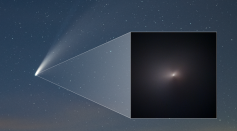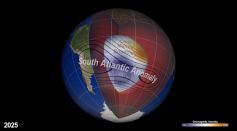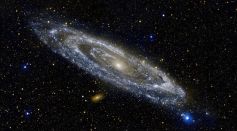SPACE

Hubble Space Telescope Captures Comet NEOWISE at its Brightest
WATCH: NASA’s Guide to Near-Light-Speed Interstellar Travel

Astronauts Train to Explore Lava Tubes on the Moon and Mars
Equinox: The Light and Darkness Phenomenon That Happens Twice a Year

Citizen Scientists Help Discover 95 New Brown Dwarfs

Upcoming SpaceX Starlink Satellite Launch to Set New Milestones

There's a Dent in Earth's Magnetic Field, What Could This Mean for Satellites?
NASA's THEMIS Mission Provides First Strong Evidence Explaining Mysteries of Auroras

This New Space Salsa Is Out of This World
NASA Moves Forward With Its Orion Adapter Installation
Hubble Team Unveils Why Betelgeuse Unexpectedly Started Dimming

Dark Distortions: Art Installation Demonstrates How Dark Matter Interacts With Light

Arecibo Observatory Reports Damaged Reflector Dish & Cables

ALMA Finds a Galaxy Like Our Own in the Early Universe
Most Popular

Extreme Weather Science Reveals How Climate Change Patterns and Global Warming Transform Earth's Weather

What Causes Tornadoes and How They Form: Tornado Science Explained for Extreme Storms

Why Pandemics Keep Happening: Pandemic Cycle and the Rise of Emerging Diseases

How Planets Form: Planet Formation and Protoplanetary Disks in Solar System Creation





